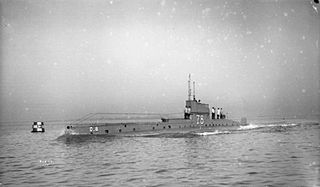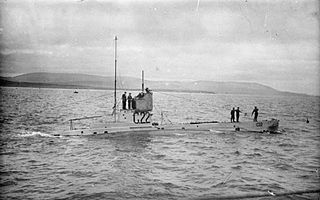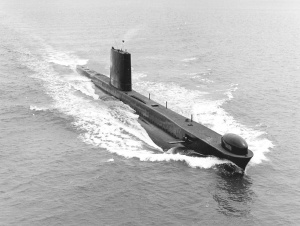HMS A5 was an early Royal Navy submarine. She was a member of Group Two of the first British A class of submarines. Like all members of her class, she was built at Vickers Barrow-in-Furness.

HMS D1 was one of eight D-class submarine built for the Royal Navy during the first decade of the 20th century.
HMS D3 was one of eight D-class submarine built for the Royal Navy during the first decade of the 20th century.
HMS D6 was one of eight D-class submarine built for the Royal Navy during the first decade of the 20th century.
HMS D7 was one of eight D-class submarines built for the Royal Navy during the first decade of the 20th century.

HMS D8 was one of eight D-class submarines built for the Royal Navy during the first decade of the 20th century.

HMAS Oxley was an Oberon class submarine of the Royal Australian Navy (RAN).
HMS C19 was one of 38 C-class submarines built for the Royal Navy in the first decade of the 20th century. The boat survived the First World War and was sold for scrap in 1920.
HMS C20 was one of 38 C-class submarines built for the Royal Navy in the first decade of the 20th century. The boat survived the First World War and was sold for scrap in 1921.

HMS C22 was one of 38 C-class submarines built for the Royal Navy in the first decade of the 20th century. The boat survived the First World War and was sold for scrap in 1920.
HMS C25 was one of 38 C-class submarines built for the Royal Navy in the first decade of the 20th century. The boat survived the First World War and was sold for scrap in 1921.

HMS C37 was one of 38 C-class submarines built for the Royal Navy in the first decade of the 20th century. The boat survived the First World War and was sold for scrap in 1919.

HMS C31 was one of 38 C-class submarines built for the Royal Navy in the first decade of the 20th century. She struck a mine in 1915 and sank with the loss of all hands.

HMS C34 was one of 38 C-class submarines built for the Royal Navy in the first decade of the 20th century. The boat was sunk by a German submarine in 1917.
HMS C28 was one of 38 C-class submarines built for the Royal Navy in the first decade of the 20th century. The boat survived the First World War and was sold for scrap in 1921.
HMS C30 was one of 38 C-class submarines built for the Royal Navy in the first decade of the 20th century. The boat survived the First World War and was sold for scrap in 1921.
HMS C35 was one of 38 C-class submarines built for the Royal Navy in the first decade of the 20th century.
HMS C32 was one of 38 C-class submarines built for the Royal Navy in the first decade of the 20th century. The boat ran aground in the Baltic in 1917 and had to be destroyed to prevent her capture.

HMS L23 was a L-class submarine built for the Royal Navy during World War I. The boat survived the war and was sold for scrap in 1931.

HMS Sterlet was a second-batch S-class submarine built during the 1930s for the Royal Navy. Completed in 1938, the boat fought in the Second World War. The submarine is one of the 12 boats named in the song Twelve Little S-Boats. Thus far she has been the only ship of the Royal Navy to be named Sterlet.









